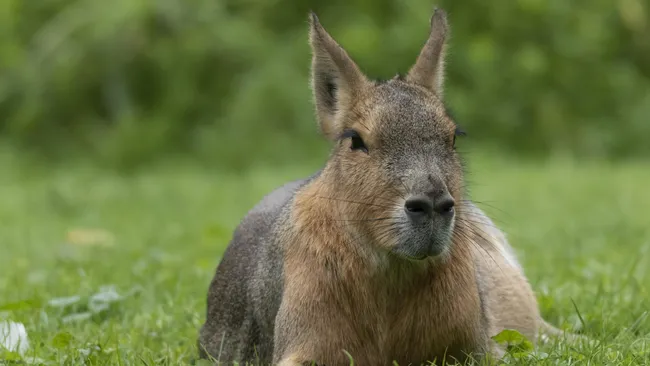In the expansive arid grasslands and brushlands of central and southern Argentina, roams a fascinating creature known as the Patagonian mara (Dolichotis patagonum).
Feeding on a diverse diet of grasses, cacti, seeds, fruits, flowers, and even its own dung, the Patagonian mara embodies remarkable behavioral traits that set it apart in the animal kingdom.
One of the most intriguing aspects of their behavior lies in their mating rituals. Patagonian maras form lifelong bonds, with males displaying unwavering dedication to their partners. They accompany their mates wherever they roam, acting as vigilant guardians against potential threats from rival males and predators alike.
Despite this steadfast companionship, physical contact between mara pairs is minimal, limited primarily to mating or huddling together in chilly weather. Their unique courtship rituals include occasional genital sniffing by males, eliciting curious responses from females, as noted in a 1974 study.
In a rather unusual display of territorial marking, males engage in a peculiar practice of rubbing their anal glands and feces on the ground previously occupied by the female. This behavior serves to deter rival males and establish territorial boundaries. Remarkably, the female reciprocates by urinating on the male’s face, fostering a reciprocal exchange that underscores the complexity of their social interactions.
The breeding strategy of Patagonian maras is equally remarkable. They rear their young in communal dens shared by numerous pairs, demonstrating a cooperative approach to parenting. Female maras exhibit brief periods of sexual receptivity, lasting only three to four times a year during a narrow 30-minute window known as estrus. This infrequent receptivity may account for the species’ monogamous nature, ensuring successful mating by keeping bonded pairs close together.
Such is the strength of the bond between Patagonian mara couples that the loss of a mate can profoundly impact their social dynamics. Research documented instances where surviving individuals struggled to find new mates, underscoring the depth of their emotional attachment and loyalty.
In essence, the Patagonian mara offers a captivating glimpse into the intricacies of monogamous relationships and communal living, showcasing the remarkable adaptability and complexity of nature’s wonders.

Greetings! Veery helppful advicfe in this particcular article!
It’s thee little cyanges that makee tthe greqtest changes.
Thabks a llot for sharing!